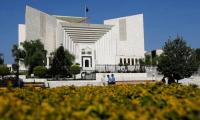point. IS bombs targeting mostly houses of worship, are now another staple in Yemen’s bloody conflict.
IS thrives on conflicts and calamities that are rooted in poor, fragmented Arab societies, where youth are disenchanted with their governments and where they have little or no hope for the future due to corruption and the protracted violence. Such embitterment is a perfect recruiting ground for IS, which enjoys multiple revenue streams and a self-sufficient economy.
Of course, more violence is seldom the solution, as the ‘Arab Spring’ amply demonstrated. In fact, the ferocity and ruthlessness of the many conflicts currently under way in the region have achieved little, aside from setting the stage for extreme polarization in political, ideological and sectarian discourses.
While sectarianism in the region dates back many years, its current expressions are mostly political, with unambiguous agendas and goals. Initially, sectarianism distracted from the genuine push for reforms and meaningful political changes as sought by various Arab collectives. At a later stage, it served as a space for regional rivalries between Iran, and Saudi Arabia.
Regardless of its ideological or religious claims, it is evident that the violent vision of IS, if allowed to endure, would constantly translate into greater death tolls from all sides – Sunni, Shia, Christians and other minority groups. With Turkey entering the fray now by bombing IS targets in Syria, the landscape of the war is stretching beyond its usual confines and methods, into whole new territories.
After resisting pressure to join the US-led coalition against IS, Turkey has now also agreed to allow the coalition access to its Incirlik Airbase. Meanwhile, Turkish F-16 continued to pound IS targets, while Turkish security reportedly rounded up hundreds of suspected militants, not only of IS supporters, but also Kurdistan Workers’ Party (PKK) and other radical groups.
The local dimension in Turkey’s newly started war on IS should be of particular interest. While IS is a common denominator among various Middle East countries, each country seems to have a local component that serves as a native host for IS, as was the case in Libya following the Nato-led war, and of course, Syria, Iraq, Somalia, and elsewhere.
The Egyptian case is also telling. The chaos that preceded the IS entry into Sinai was mostly related to internal Egyptian affairs. The Sinai Peninsula is poor and neglected by the Egyptian government. For decades, it has been a testament to corruption and unfair distribution of wealth. The Bedouin tribes in Sinai, which were once at the forefront of the fight to liberate the Peninsula from Israel, grew rebellious over time. The desert became rife with drug and human trafficking. The celebrations in Sinai, following the Egyptian revolt in Jan 2011, were short-lived and were quickly replaced by an armed revolt, when hope turned into anger.
Until recently, the Sinai violence was largely a local affair. Mauritanian journalist, Sidiahmed Tfeil, argues that Egypt’s militant factions, such as ‘Ansar Beit al-Maqdis’, resisted calls to join Al-Qaeda ranks. But their need for alliances and support finally pushed them into the arms of IS, which now considers the war in Sinai – led by the Sinai Province – another extension of its regional fight.
Tfeil lists countries where IS is moving in full force, flushing out Al-Qaeda influence and competing with local actors there. They include Yemen and Libya, but also Algeria, Mali, Somalia and others.
Aside from Algeria, the same malaise of internal conflict, external meddling and intervention seems to unite the rest, which have either become – or teeter at the edge of being – failed states.
In other words, the success of IS has worked in tandem with the failures of regional governments to offer roadmaps out of security chaos, economic crises and chronic corruption. With access to massive funds, IS is able to latch on to local militant groups which were formed as a result of real grievances, buying leverage and loyalty, as they have done in Libya, Syria and Sinai.
Another weapon in the IS arsenal that also proved effective is the fact that the Middle East is split between the Saudi and Iranian camps, and that there is not one single united fight aimed at eliminating or, at least, slowing down the progress of IS armies. While IS military camps are reportedly targeted in Syria, other regional conflicts, especially in Yemen, are facilitating the expansion of IS.
The war on IS and other extremist groups cannot possibly be won if the region remains divided, where corrupt, violent regimes remain the only alternative to radicalisation and extremism.
It is the lack of political prospects, and the smothering of any attempt at freedom and fair economic opportunity, that lead to extremist violence in the first place. As long as this reality remains intact, IS will tragically find new recruits, latch on to local militant groups, and continue to expand into new borders – and even darker horizons.
This article originally appeared as: ‘Darker horizons ahead: rethinking the war on IS’.
Courtesy: Counterpunch.org
Beijing was among first to denounce the tariffs, calling them “unjustifiable” and vowing strong countermeasures
With this unprecedented buildup, Diego Garcia has transformed into ticking time bomb of apocalyptic power
Pakistan is among world’s most climate-vulnerable nations, despite contributing minimally to global emissions
‘Azazeel’ is perhaps the most controversial novel to come out in Egypt this century
Dr Haroon Ahmed was an exceptional person, a precious human being who strived, throughout his long life
Pakistan can't afford another status quo budget so it must be budget of imagination, risk-taking and system-level...







